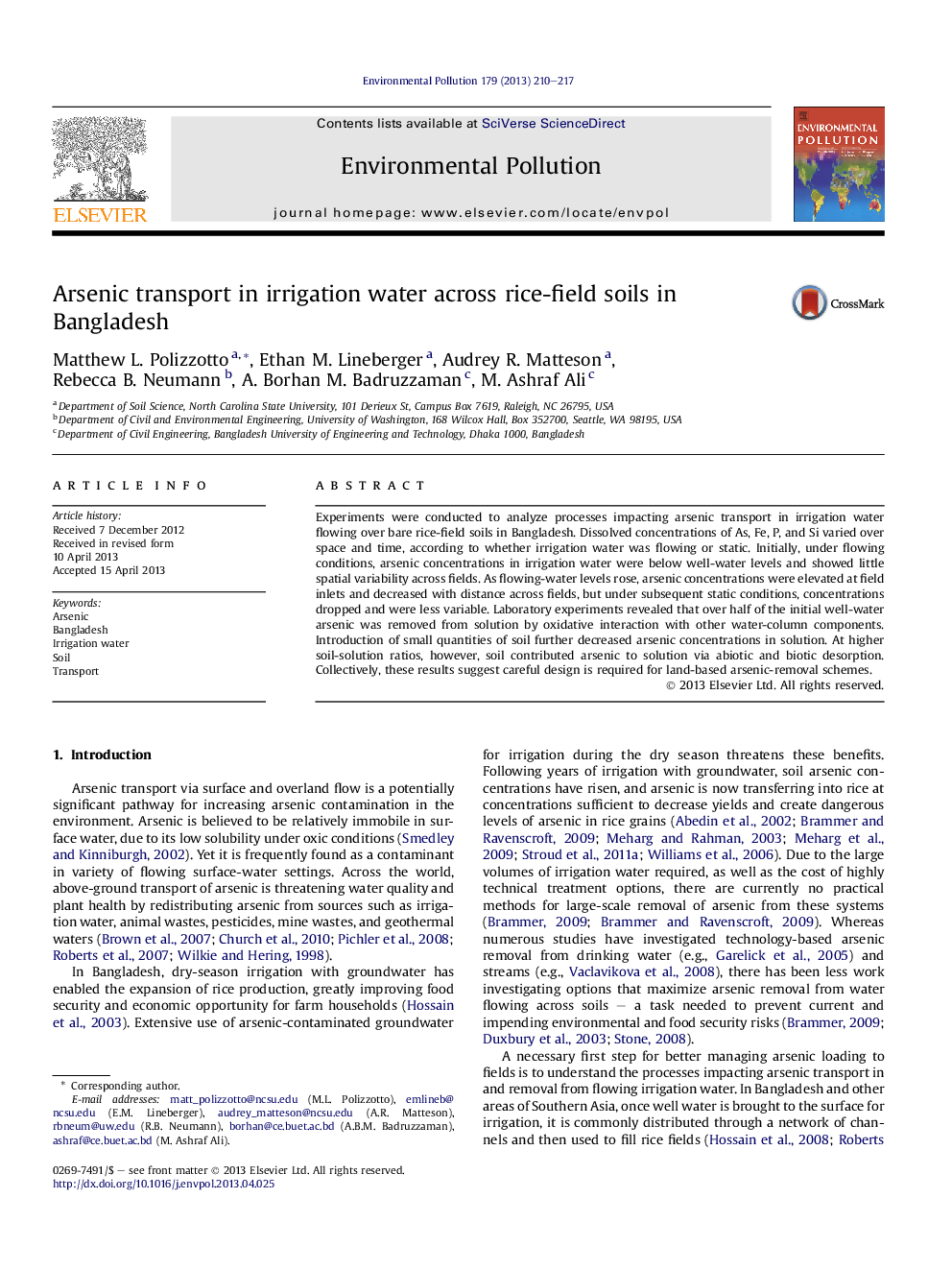| Article ID | Journal | Published Year | Pages | File Type |
|---|---|---|---|---|
| 6318769 | Environmental Pollution | 2013 | 8 Pages |
Abstract
Experiments were conducted to analyze processes impacting arsenic transport in irrigation water flowing over bare rice-field soils in Bangladesh. Dissolved concentrations of As, Fe, P, and Si varied over space and time, according to whether irrigation water was flowing or static. Initially, under flowing conditions, arsenic concentrations in irrigation water were below well-water levels and showed little spatial variability across fields. As flowing-water levels rose, arsenic concentrations were elevated at field inlets and decreased with distance across fields, but under subsequent static conditions, concentrations dropped and were less variable. Laboratory experiments revealed that over half of the initial well-water arsenic was removed from solution by oxidative interaction with other water-column components. Introduction of small quantities of soil further decreased arsenic concentrations in solution. At higher soil-solution ratios, however, soil contributed arsenic to solution via abiotic and biotic desorption. Collectively, these results suggest careful design is required for land-based arsenic-removal schemes.
Related Topics
Life Sciences
Environmental Science
Environmental Chemistry
Authors
Matthew L. Polizzotto, Ethan M. Lineberger, Audrey R. Matteson, Rebecca B. Neumann, A. Borhan M. Badruzzaman, M. Ashraf Ali,
